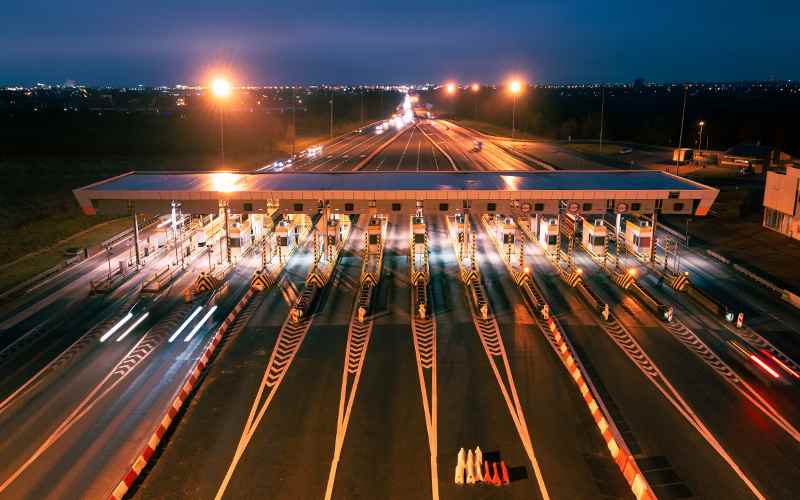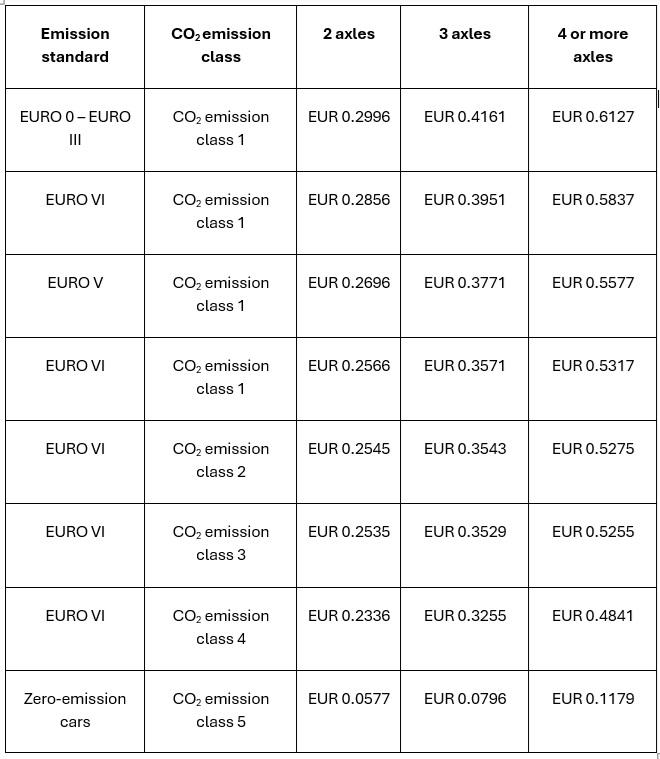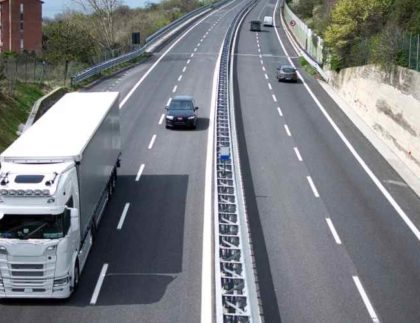

Recent years have brought numerous changes and challenges to truck transport in Europe. A recent hot topic in the industry are, among others, road tolls that we have covered on an ongoing basis in our blog. This time we will take a look at the applicable regulations in Austria.
However, our coverage will not be limited to information about rates. This article will also present specific road sections where additional road tolls are applicable. Aside from this, we will discuss the manner of charging toll and the available payment methods. If your vehicles use Austrian highways or expressways, this guide is for you – please read on!
What are the current road tolls in Austria?
New road tolls in Austria result from amendments to the Eurovignettes Directive introduced by the European Commission. These amendments are intended to help reduce CO2 emissions by 30% within the next five years.
We’ve got you covered if you are wondering what road tolls are applicable for trucks in Austria in 2024. The road toll amount depends on vehicle emission class and the number of axles. All zero emission vehicles will be classified into the CO2 emission class 5. In this case toll costs, when calculated per 1 kilometer of road, will be EUR 0.0577 (2 axles), EUR 0.0796 (3 axles) and EUR 0.1179 (4 or more axles).
Vehicles with internal combustion engines (including Diesel) and first registration date before 1 July 2019 will be automatically classified into CO2 emission class 1. Road tolls in Austria for a vehicle classified into this class and meeting the EURO IV standards are as follows:
- EUR 0.2856 – two axles;
- EUR 0.3951 – three axles;
- EUR 0.5837 – four or more axles.
To compare, road tolls for CO2 emission class 1 vehicles, meeting the EURO 0 to EURO III standards, amount to EUR 0,2996, EUR 0,4161 or EUR 0,6127 (depending on the number of axles).
Driving a car meeting the EURO V standard, even one assigned to the CO2 emission class 1, incurs a fee of € 0.2696, € 0.3771 or € 0.5577 per kilometer.
Below is the full list of toll rates in Austria in 2025, applicable to vehicles with a GVW of more than 3.5 tons. Amounts are per kilometer and do not include VAT.

What are the rates applicable to various truck categories?
Detailed information on road tolls in Austria in 2025 can be found at GO-Maut. Online calculators for vehicles over 3.5 tons are also quite popular. You can estimate the costs using, among others, the ASFINAG calculator.
How are truck tolls calculated in Austria?
The toll charging manner should also be mentioned when discussing road tolls Austria. The GO road tolls system is based on DSRC (Dedicated Short Range Communication) technology. In order to use this system and manage road tolls, you need an OBU (on-board-unit) supporting this technology.
The choice is wide – you can use devices dedicated for road tolls in Austria, as well as the devices provided by the fuel card operators that support numerous countries as part of the EETS system.
Eurowag offers toll collection devices with a convenient solution – EVA OBU. The devices offer road toll payments in 25 European countries and provide 24 h support in the customer’s native language. Capabilities are not limited to tolls – EVA OBU also offers fleet management features, a live vehicle tracking option, and advanced anti-fuel payment fraud technology.
When planning your transport, you can also check individual rates using the digital maps dedicated to heavy transport that TMS systems offer. Solutions like Marcos TMS or fireTMS make it possible to recalculate the entire international transportation route in a precise and fast way. This means that, for example, when carrying an order from the Czech Republic to Italy via Austria, a carrier can check tolls in all these countries with one tool.
What do the road tolls in Austria depend on?
Toll rates for trucks in Austria vary depending on the technical parameters of the vehicle. Of key importance here are the number of axles, CO2 emissions’ class and level, and gross vehicle weight.
In practice, this promotes modern, cleaner vehicles. A breakdown by emission class was introduced – from CO2 class 1, to which the most polluting vehicles are assigned, to CO2 class 5 for zero-emission cars. The toll rate differentiation is based on functional and environmental factors – and reflects infrastructure wear and tear as well as climate impacts. In addition, additional tolls apply on some sections of road in Austria.
What routes in Austria are subject to additional tolls?
The additional road tolls introduced in Austria currently cover the following route sections:
- A9 Pyhrn motorway (Gleinalm and Bosruck tunnels);
- A10 Tauern motorway (Tauern and Katschberg tunnels);
- A11 Karawanken motorway (Karawanken tunnel);
- A13 Brenner motorway;
- S16 Arlberg expressway (Arlberg tunnel).
In addition, the A12 Unterinntal section of the motorway has an increased toll rate – 25% higher than the standard road toll rate applicable on other paid roads in Austria.
Do you need a vignette in Austria?
In Austria, the obligation to have a vignette applies only to vehicles with a gross vehicle weight of up to 3.5 tons – that is, primarily cars and motorcycles. The entire purchase process can be completed online through the platform www.go-maut.at.
How much does a vignette cost in Austria?
Toll charges for cars in Austria depend on the selected vignette type:
- 1-day vignette: EUR 9.30;
- 10-day vignette: EUR 12.40;
- 2-month vignette: EUR 31.10;
- annual vignette: EUR 103.80.
What are the differences in road tolls between Austria and neighboring countries?
Road tolls in Austria are operated in a similar manner to those in the neighboring countries. As mentioned earlier, EU countries are required to successively adjust their internal regulations to the European Commission guidelines. This means that road tolls in individual countries will soon become even more harmonized. As a general rule, they depend on the following factors:
- vehicle type;
- route section;
- EURO emission standard.
Despite the similarities, countries have their own separate payment systems, their own rules and rates, and detailed information is available on national websites. As changes being made to align regulations with CO2 emissions standards, we encourage you to follow the updates published on such websites.
Visit our blog and social media, where we regularly publish information on changes in road tolls, as well as latest updates on other important issues for the transport industry. Save time and stay up to date with our publications!










